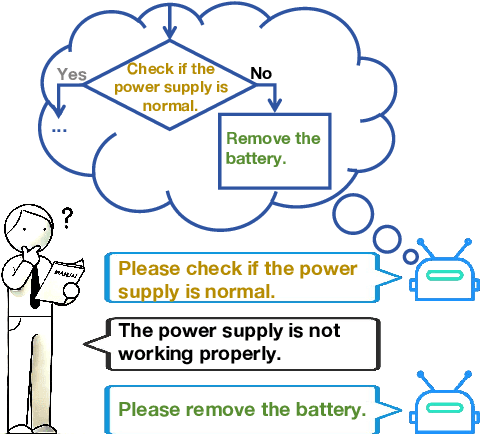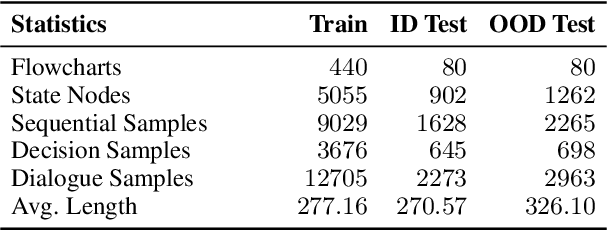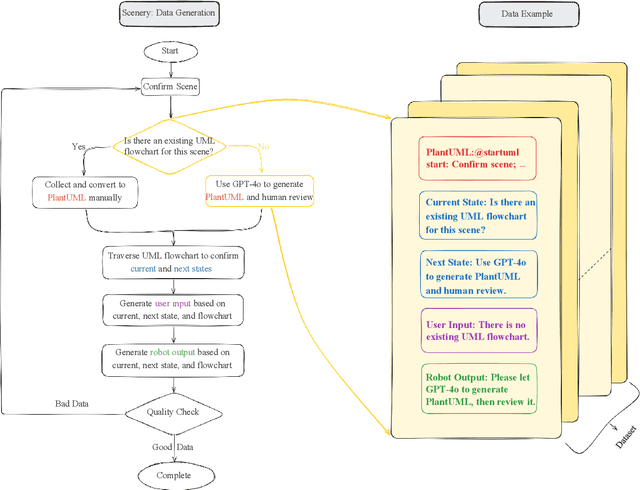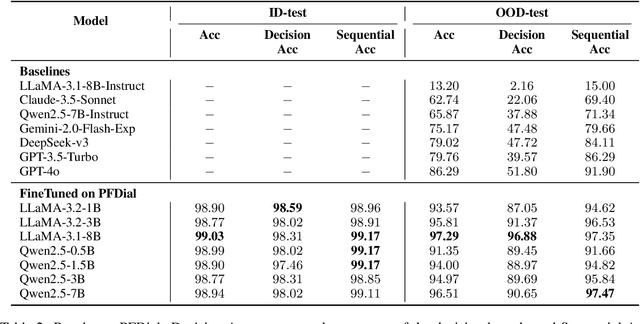Zhihao Zhang
Advancing Real-World Parking Slot Detection with Large-Scale Dataset and Semi-Supervised Baseline
Sep 16, 2025Abstract:As automatic parking systems evolve, the accurate detection of parking slots has become increasingly critical. This study focuses on parking slot detection using surround-view cameras, which offer a comprehensive bird's-eye view of the parking environment. However, the current datasets are limited in scale, and the scenes they contain are seldom disrupted by real-world noise (e.g., light, occlusion, etc.). Moreover, manual data annotation is prone to errors and omissions due to the complexity of real-world conditions, significantly increasing the cost of annotating large-scale datasets. To address these issues, we first construct a large-scale parking slot detection dataset (named CRPS-D), which includes various lighting distributions, diverse weather conditions, and challenging parking slot variants. Compared with existing datasets, the proposed dataset boasts the largest data scale and consists of a higher density of parking slots, particularly featuring more slanted parking slots. Additionally, we develop a semi-supervised baseline for parking slot detection, termed SS-PSD, to further improve performance by exploiting unlabeled data. To our knowledge, this is the first semi-supervised approach in parking slot detection, which is built on the teacher-student model with confidence-guided mask consistency and adaptive feature perturbation. Experimental results demonstrate the superiority of SS-PSD over the existing state-of-the-art (SoTA) solutions on both the proposed dataset and the existing dataset. Particularly, the more unlabeled data there is, the more significant the gains brought by our semi-supervised scheme. The relevant source codes and the dataset have been made publicly available at https://github.com/zzh362/CRPS-D.
An Uncertainty-Weighted Decision Transformer for Navigation in Dense, Complex Driving Scenarios
Sep 16, 2025Abstract:Autonomous driving in dense, dynamic environments requires decision-making systems that can exploit both spatial structure and long-horizon temporal dependencies while remaining robust to uncertainty. This work presents a novel framework that integrates multi-channel bird's-eye-view occupancy grids with transformer-based sequence modeling for tactical driving in complex roundabout scenarios. To address the imbalance between frequent low-risk states and rare safety-critical decisions, we propose the Uncertainty-Weighted Decision Transformer (UWDT). UWDT employs a frozen teacher transformer to estimate per-token predictive entropy, which is then used as a weight in the student model's loss function. This mechanism amplifies learning from uncertain, high-impact states while maintaining stability across common low-risk transitions. Experiments in a roundabout simulator, across varying traffic densities, show that UWDT consistently outperforms other baselines in terms of reward, collision rate, and behavioral stability. The results demonstrate that uncertainty-aware, spatial-temporal transformers can deliver safer and more efficient decision-making for autonomous driving in complex traffic environments.
Bootstrapping Reinforcement Learning with Sub-optimal Policies for Autonomous Driving
Sep 04, 2025Abstract:Automated vehicle control using reinforcement learning (RL) has attracted significant attention due to its potential to learn driving policies through environment interaction. However, RL agents often face training challenges in sample efficiency and effective exploration, making it difficult to discover an optimal driving strategy. To address these issues, we propose guiding the RL driving agent with a demonstration policy that need not be a highly optimized or expert-level controller. Specifically, we integrate a rule-based lane change controller with the Soft Actor Critic (SAC) algorithm to enhance exploration and learning efficiency. Our approach demonstrates improved driving performance and can be extended to other driving scenarios that can similarly benefit from demonstration-based guidance.
Less Is More: Training-Free Sparse Attention with Global Locality for Efficient Reasoning
Aug 09, 2025Abstract:Large reasoning models achieve strong performance through test-time scaling but incur substantial computational overhead, particularly from excessive token generation when processing short input prompts. While sparse attention mechanisms can reduce latency and memory usage, existing approaches suffer from significant accuracy degradation due to accumulated errors during long-generation reasoning. These methods generally require either high token retention rates or expensive retraining. We introduce LessIsMore, a training-free sparse attention mechanism for reasoning tasks, which leverages global attention patterns rather than relying on traditional head-specific local optimizations. LessIsMore aggregates token selections from local attention heads with recent contextual information, enabling unified cross-head token ranking for future decoding layers. This unified selection improves generalization and efficiency by avoiding the need to maintain separate token subsets per head. Evaluation across diverse reasoning tasks and benchmarks shows that LessIsMore preserves -- and in some cases improves -- accuracy while achieving a $1.1\times$ average decoding speed-up compared to full attention. Moreover, LessIsMore attends to $2\times$ fewer tokens without accuracy loss, achieving a $1.13\times$ end-to-end speed-up compared to existing sparse attention methods.
LLMEval-3: A Large-Scale Longitudinal Study on Robust and Fair Evaluation of Large Language Models
Aug 07, 2025Abstract:Existing evaluation of Large Language Models (LLMs) on static benchmarks is vulnerable to data contamination and leaderboard overfitting, critical issues that obscure true model capabilities. To address this, we introduce LLMEval-3, a framework for dynamic evaluation of LLMs. LLMEval-3 is built on a proprietary bank of 220k graduate-level questions, from which it dynamically samples unseen test sets for each evaluation run. Its automated pipeline ensures integrity via contamination-resistant data curation, a novel anti-cheating architecture, and a calibrated LLM-as-a-judge process achieving 90% agreement with human experts, complemented by a relative ranking system for fair comparison. An 20-month longitudinal study of nearly 50 leading models reveals a performance ceiling on knowledge memorization and exposes data contamination vulnerabilities undetectable by static benchmarks. The framework demonstrates exceptional robustness in ranking stability and consistency, providing strong empirical validation for the dynamic evaluation paradigm. LLMEval-3 offers a robust and credible methodology for assessing the true capabilities of LLMs beyond leaderboard scores, promoting the development of more trustworthy evaluation standards.
Speech-Language Models with Decoupled Tokenizers and Multi-Token Prediction
Jun 14, 2025



Abstract:Speech-language models (SLMs) offer a promising path toward unifying speech and text understanding and generation. However, challenges remain in achieving effective cross-modal alignment and high-quality speech generation. In this work, we systematically investigate the impact of key components (i.e., speech tokenizers, speech heads, and speaker modeling) on the performance of LLM-centric SLMs. We compare coupled, semi-decoupled, and fully decoupled speech tokenizers under a fair SLM framework and find that decoupled tokenization significantly improves alignment and synthesis quality. To address the information density mismatch between speech and text, we introduce multi-token prediction (MTP) into SLMs, enabling each hidden state to decode multiple speech tokens. This leads to up to 12$\times$ faster decoding and a substantial drop in word error rate (from 6.07 to 3.01). Furthermore, we propose a speaker-aware generation paradigm and introduce RoleTriviaQA, a large-scale role-playing knowledge QA benchmark with diverse speaker identities. Experiments demonstrate that our methods enhance both knowledge understanding and speaker consistency.
From Generation to Detection: A Multimodal Multi-Task Dataset for Benchmarking Health Misinformation
May 24, 2025Abstract:Infodemics and health misinformation have significant negative impact on individuals and society, exacerbating confusion and increasing hesitancy in adopting recommended health measures. Recent advancements in generative AI, capable of producing realistic, human like text and images, have significantly accelerated the spread and expanded the reach of health misinformation, resulting in an alarming surge in its dissemination. To combat the infodemics, most existing work has focused on developing misinformation datasets from social media and fact checking platforms, but has faced limitations in topical coverage, inclusion of AI generation, and accessibility of raw content. To address these issues, we present MM Health, a large scale multimodal misinformation dataset in the health domain consisting of 34,746 news article encompassing both textual and visual information. MM Health includes human-generated multimodal information (5,776 articles) and AI generated multimodal information (28,880 articles) from various SOTA generative AI models. Additionally, We benchmarked our dataset against three tasks (reliability checks, originality checks, and fine-grained AI detection) demonstrating that existing SOTA models struggle to accurately distinguish the reliability and origin of information. Our dataset aims to support the development of misinformation detection across various health scenarios, facilitating the detection of human and machine generated content at multimodal levels.
MonoCoP: Chain-of-Prediction for Monocular 3D Object Detection
May 08, 2025Abstract:Accurately predicting 3D attributes is crucial for monocular 3D object detection (Mono3D), with depth estimation posing the greatest challenge due to the inherent ambiguity in mapping 2D images to 3D space. While existing methods leverage multiple depth cues (e.g., estimating depth uncertainty, modeling depth error) to improve depth accuracy, they overlook that accurate depth prediction requires conditioning on other 3D attributes, as these attributes are intrinsically inter-correlated through the 3D to 2D projection, which ultimately limits overall accuracy and stability. Inspired by Chain-of-Thought (CoT) in large language models (LLMs), this paper proposes MonoCoP, which leverages a Chain-of-Prediction (CoP) to predict attributes sequentially and conditionally via three key designs. First, it employs a lightweight AttributeNet (AN) for each 3D attribute to learn attribute-specific features. Next, MonoCoP constructs an explicit chain to propagate these learned features from one attribute to the next. Finally, MonoCoP uses a residual connection to aggregate features for each attribute along the chain, ensuring that later attribute predictions are conditioned on all previously processed attributes without forgetting the features of earlier ones. Experimental results show that our MonoCoP achieves state-of-the-art (SoTA) performance on the KITTI leaderboard without requiring additional data and further surpasses existing methods on the Waymo and nuScenes frontal datasets.
SpecReason: Fast and Accurate Inference-Time Compute via Speculative Reasoning
Apr 10, 2025



Abstract:Recent advances in inference-time compute have significantly improved performance on complex tasks by generating long chains of thought (CoTs) using Large Reasoning Models (LRMs). However, this improved accuracy comes at the cost of high inference latency due to the length of generated reasoning sequences and the autoregressive nature of decoding. Our key insight in tackling these overheads is that LRM inference, and the reasoning that it embeds, is highly tolerant of approximations: complex tasks are typically broken down into simpler steps, each of which brings utility based on the semantic insight it provides for downstream steps rather than the exact tokens it generates. Accordingly, we introduce SpecReason, a system that automatically accelerates LRM inference by using a lightweight model to (speculatively) carry out simpler intermediate reasoning steps and reserving the costly base model only to assess (and potentially correct) the speculated outputs. Importantly, SpecReason's focus on exploiting the semantic flexibility of thinking tokens in preserving final-answer accuracy is complementary to prior speculation techniques, most notably speculative decoding, which demands token-level equivalence at each step. Across a variety of reasoning benchmarks, SpecReason achieves 1.5-2.5$\times$ speedup over vanilla LRM inference while improving accuracy by 1.0-9.9\%. Compared to speculative decoding without SpecReason, their combination yields an additional 19.4-44.2\% latency reduction. We open-source SpecReason at https://github.com/ruipeterpan/specreason.
PFDial: A Structured Dialogue Instruction Fine-tuning Method Based on UML Flowcharts
Mar 09, 2025



Abstract:Process-driven dialogue systems, which operate under strict predefined process constraints, are essential in customer service and equipment maintenance scenarios. Although Large Language Models (LLMs) have shown remarkable progress in dialogue and reasoning, they still struggle to solve these strictly constrained dialogue tasks. To address this challenge, we construct Process Flow Dialogue (PFDial) dataset, which contains 12,705 high-quality Chinese dialogue instructions derived from 440 flowcharts containing 5,055 process nodes. Based on PlantUML specification, each UML flowchart is converted into atomic dialogue units i.e., structured five-tuples. Experimental results demonstrate that a 7B model trained with merely 800 samples, and a 0.5B model trained on total data both can surpass 90% accuracy. Additionally, the 8B model can surpass GPT-4o up to 43.88% with an average of 11.00%. We further evaluate models' performance on challenging backward transitions in process flows and conduct an in-depth analysis of various dataset formats to reveal their impact on model performance in handling decision and sequential branches. The data is released in https://github.com/KongLongGeFDU/PFDial.
 Add to Chrome
Add to Chrome Add to Firefox
Add to Firefox Add to Edge
Add to Edge